Kitting out your kitchen? This is the ultimate kitchen essentials list that every home needs
Conquer any recipe with these all-important kitchen essentials, from scissors and spatulas through to stainless steel pans
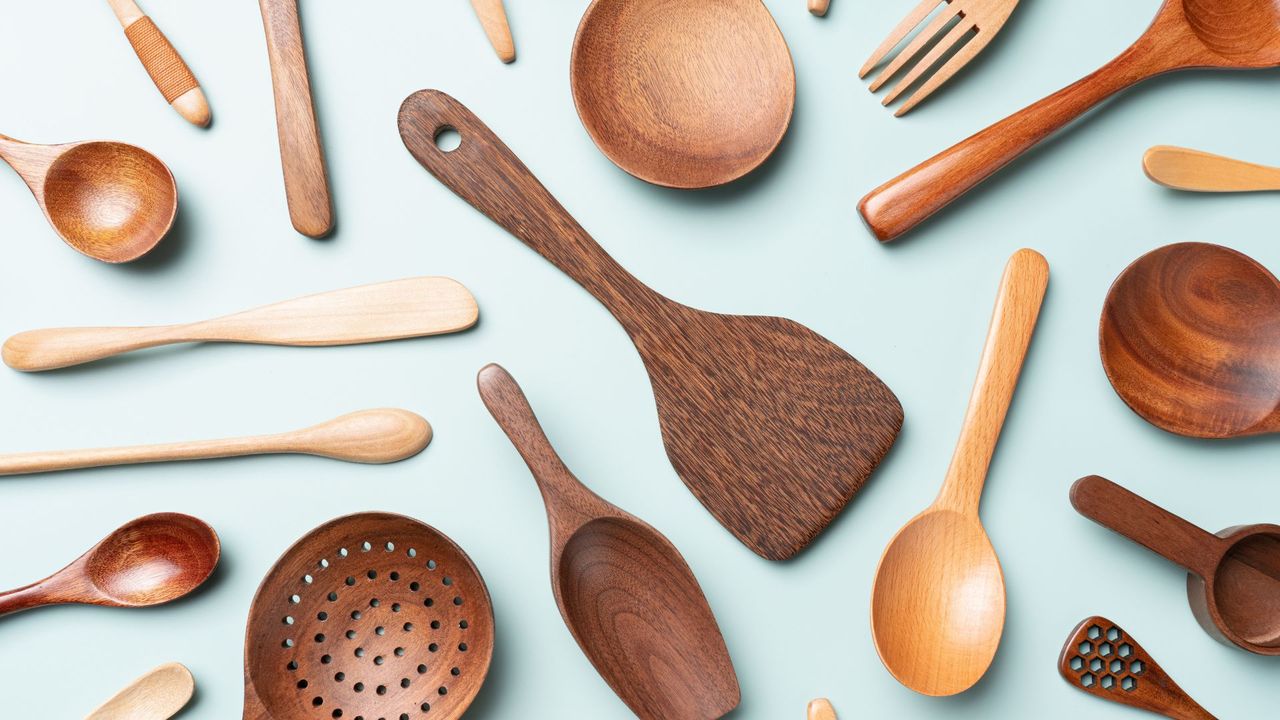

Whether you're building a new suite of kitchen essentials, or you want to refresh your current options, it's helpful to know exactly what you need to have in the cupboards and drawers.
As someone who has recently started from scratch, I've been making a list of all the little bits and pieces that I wish I remembered to kit out my kitchen with. Now, with the benefit of hindsight, I can talk you through the true essentials that you need.
From the best stainless steel pans and most powerful blenders through to scissors and scales, here's my list of what you need to have in your kitchen. Even if it sounds obvious, there are people that forget things. Don't be one of them.
32 truly essential items every kitchen needs
A good set of knives
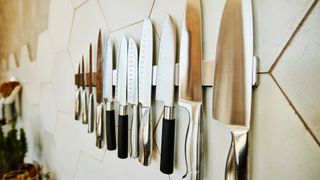
Knives are so key to your kitchen set-up that I'm not even sure how to start making a case for them as an essential. Investing in a good quality selection of knives gives you versatility in the kitchen, because they'll each specialise in different jobs. Experts will tell you that the essentials are: a chef's knife (for chopping and slicing), a bread knife (for sawing though bread dough), and a paring knife (for smaller, fiddly jobs). You could get by with those three, but it's always nice to have a utility knife, boning knife, carving knife, and, in my house, a cheese knife is always welcome too.
Wooden spoon
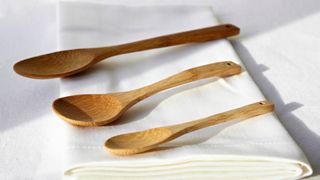
You won't realise that you need one of these until you're stood over your non-stick pan (another one for the list of essentials) wondering how to stir your food without scratching the base of the pan. I've specified that it should be wooden, because this is one of the more gentle materials, but it's also a poor conductor of heat and it's made from renewable resources. If you're not fussed about that, a silicone spoon can be handy, especially when it comes to the clean up.
Wooden chopping board
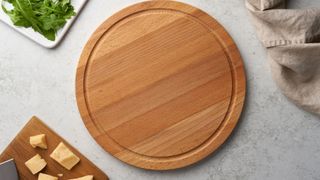
I get a funny feeling that runs up my spine any time that I watch someone chop directly onto their worktop. This is because A) surely it scratches, B) it's hard to clean and C) it's just ridiculous. A chopping board, for both a hygiene and safety perspective, is essential. I've said to go for a wooden one for all the same reasons that I recommend a wooden spoon. You won't end up with microplastics sneaking into your food and it's actually easier to keep clean and hygienic, because wood is naturally antiseptic and it can absorb bacteria, trapping and killing it.
Colander
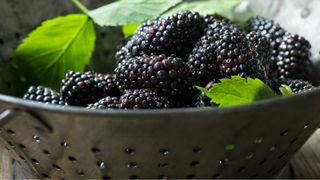
I was always reluctant to buy a colander because I thought that a sieve or a carefully positioned lid could do this job. After losing lots of peas and rice down the drain, I'm here to tell you that a colander is definitely a kitchen essential. Even though these look big and bulky, you can get clever rubber designs that almost flatten into nothing, or you can buy ones that come in a set with bowls, so they can stack together. There's really no excuse not to have one.
Sign up for the woman&home newsletter
Sign up to our free daily email for the latest royal and entertainment news, interesting opinion, expert advice on styling and beauty trends, and no-nonsense guides to the health and wellness questions you want answered.
Whisk
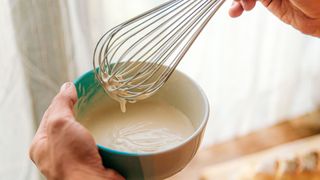
There will always come a time when you wish you had a whisk to hand. A manual whisk is always great if you've got the arm strength, but there are lots of clever cordless electric whisks that make whipping cream, egg whites and aquafaba a total dream. You can use a fork to some extent and there are sub-categories of whisks, such as egg whisks, that you might want to think about. For now though, just make sure you have a whisk in some shape or form.
Spatula
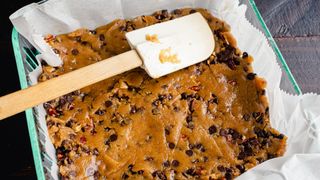
Whilst my theme is to always opt for wood, a silicone spatula will get you very far in a kitchen (and it'll help you to make the most of every last bit of food). Everyone from cooks to bakers to dedicated takeaway fans will know that you need a spatula for efficient consumption of food. I like spatulas that let you lift off the end, because I think you've got much better scope for cleaning them after use. However, if you buy an all-silicone one, it doesn't matter.
Bowl set
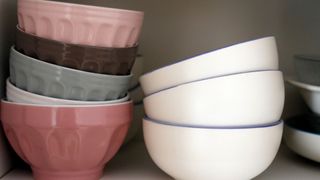
This especially applies to keen bakers and chefs, but I think every kitchen needs a good bowl set. Whether you go for glass, metal, or enamel, having a range of different sizes will prove endlessly useful when you're trying to follow a recipe. My enamel set is almost too pretty to use, except for the fact that I love to chop and weigh out all my ingredients and then line them up before I start cooking. Am I a victim of Instagram culture? I think so.
Tongs
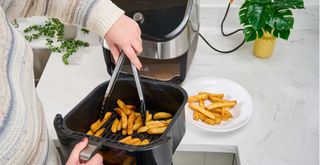
You won't realise you need these until you need them and they're not there. Tongs are great for keeping your hands away from burns and your food away from burning. I have metal tongs, but rubber-coated ones can be better for keeping your non-stick clean. Come summer, you'll have these at the barbecue, but even in the winter, you can use them to turn slow-cooked joints of meat and extra hot dishes in the oven or air fryer. Thank me later for this little tip - you'll need it.
Thermometer
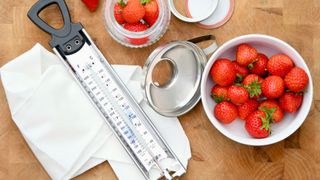
Food thermometers are essential for having around the kitchen. I always thought that thermometers were only useful for meat eaters, but they're not. Of course, it's good to have a probe to check that your chicken is cooked, but if you're making a caramel or some fudge, you'll need to check temperatures too. I've tried struggling without them and it wasn't a success. Even if you're just using the oven, it's good to have a separate thermometer, as plenty of these appliances give unreliable readings.
Egg timer
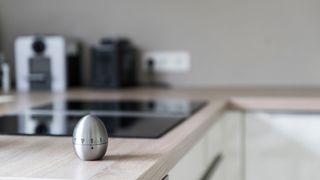
I had to put my case forward for this one, because lots of people use their phones or their laptops as timers. However, I'm old school. I don't want to rely on a phone that might run out of battery and I don't want to be forced to carry that around with me. An egg timer is a retro but reliable way to keep an eye on your food. I love hearing the chime of mine from the other room, or twisting it for an extra five minutes. They're not expensive either.
Pan set
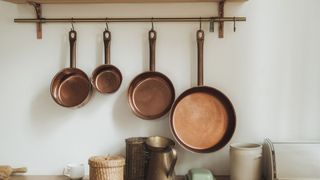
Pan sets come in all shapes and sizes, so you'll need to do some research to work out what you want. I'd always go for a stainless steel pan collection, but check that they're induction hob-friendly, so that you don't end up moving homes with a pan set that's redundant. In a basic set, you'll want a saucepan, maybe in two sizes. Bigger sets should include milk pans and stew pots, and some will even have frying pans too. It's better to have more pans that you can pick and choose between than two limiting sizes.
Frying pan
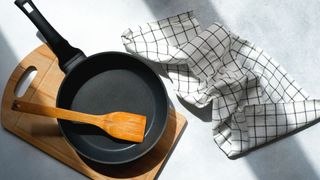
Often sold separately to pan sets, the best frying pans offer a special set of skills. You can opt for ceramic, stainless steel, or synthetic coatings, but make sure that you're buying the right size for the tasks that you're going to give them. And of course, always check that yours is compatible with the kind of cooker that you have; getting the wrong type is a mistake you don't want to make.
Cast iron pot, aka a Dutch oven
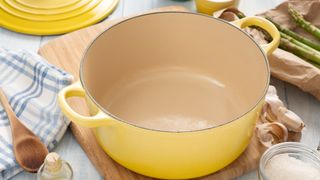
Cast iron is a very traditional kind of cookware and it's remained a classic for a reason. These transfer heat evenly and steadily, proving themselves to be some of the most robust pieces that you'll have in your kitchen. They're particularly good for slow cooks and stews, but lots of people use them as bread ovens too. In a world without price tags, my kitchen would be full of Le Creuset casserole dishes, but there are plenty of alternative cast iron pots available from brands such as Pro Cook.
Baking tray
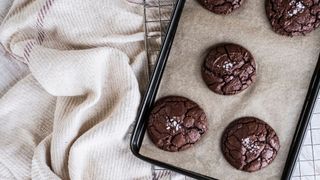
You need a baking tray. I could stop right there, with just one sentence, but I can't resist elaborating. You can pick up baking trays that have non-stick coatings, or stainless steel ones. These are best used for pizzas and cookies, but you'll need them any time that you put a dish or a tray in the oven, so make sure that yours is robust and stylish. You'll likely have whichever one you buy for an entire lifetime. My last piece of advice on this is to go darker colour-wise and to measure up your oven. They'll scratch and burn over time. It's inevitable.
Cupcake tray
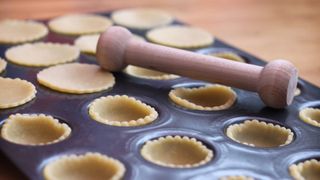
If you're a baker, you'll know just how handy a cupcake tray comes in. As the name would suggest, it's really good for cakes and muffins. However, if you think about how you're cooking your Yorkshire puddings for the roast dinner, you'll see just how crucial this tray is for a good kitchen set-up. When it comes to Christmas, you'll be making mince pies and mini tarts in these, so it's always handy to opt for a non-stick coating. It'll make the clean up a whole lot easier.
Roasting tin
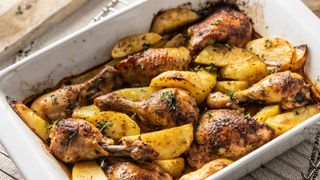
There are whole recipe books that base themselves off using a roasting tin. If that doesn't tell you all you need to know, I don't know what will. You can opt for a metal tin, or even invest in a collection of ceramic or glass trays. I have a red ceramic tin, purely because they make my simple roasts look so much nicer than if they were in a plain metal dish. Whatever you go for, they'll come in handy for traybakes and vegetable roasts, I promise.
Cake tin
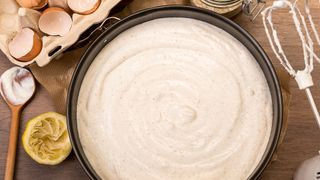
This is another baking essential slipping in, but what's life without a bit of cake? I use mine for flans and pies too, but it can work the other way around. You need something round in your kitchen and a cake tin (especially if it has a removable base) is the most versatile option out there. Again, non-stick coatings can be really helpful, even if you like to grease and line your tray anyway. It's a great protection if you ever do happen to have a spill or leak.
Bread tin, bread bin, and a toaster
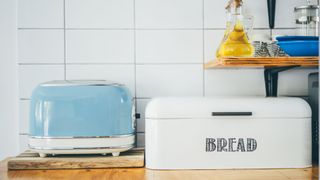
There are a lot of bread accessories that you'll need in your kitchen. Hopefully, your knife set will include a bread knife, so we can tick that off. Then, you might want a loaf tin, if you make your own bread. Once you've got a loaf in the house, you'll want a bread bin for storing it in and a toaster for breakfast time. I've bundled these all together, because they make a lovely collection and I can't imagine not having one. However, if you know you never bake, you can probably skip the loaf tin, for now.
Wire rack
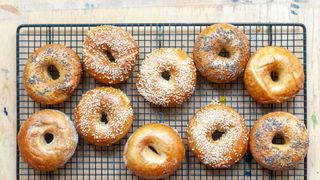
Even if you have heat-proof surfaces, a wire rack is really useful for cooling down foods and for keeping your hands (and surfaces) safe from hot trays coming out of the oven. You can buy foldable racks if you're worried about space, but bear in mind that these will be less sturdy. If you're really worried about space, I'd recommend investing in a few small wire racks that you can stack together, because these will store easily and work as well as a larger wire rack.
Measuring spoons
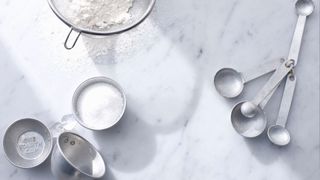
A set of measuring spoons will never go amiss in a kitchen. Recipe books are always calling for teaspoons of this, half tablespoons of that, and pinches of this or that. With a special set, you don't need to stand at the recipe book whilst scratching your head. The answers are already measured out for you. It's handy if you can keep these in a keyring style set-up, but if you know you'll only need one, they are sold separately. Just make sure that they're easy to clean.
Measuring jug
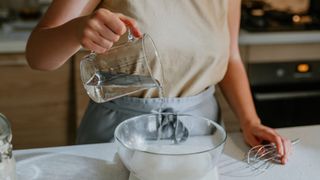
Talking of measuring, a jug is very handy. This is one of those things that you can't do by eye and you'll often need to measure out liquids for recipes. Actually, even if you rarely cook, you'll need your measuring jug for simply boiling pasta and rice. I'd always go for a glass jug (Pyrex is a classic brand), because it's easier to watch what you're measuring out, but it's a personal choice. I've seen some lovely ceramic and stainless steel options too.
Peeler
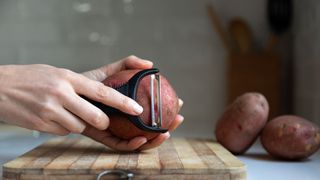
You can get some very neat peelers that make life very easy these days. Whether you choose one that sits in the palm of your hand or you opt for a more traditional silhouette, you don't want to try making mash without one of these. You can buy ones that move with the contours of your fruit and vegetables (very useful) or ones that double up as apple corers. It seems, there is no end to what these can do.
Can opener
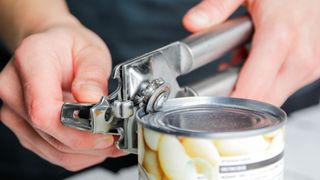
There's nothing more frustrating than standing with a can that you can't open because you assumed that every can has a pull tag these days. They don't. And you can thank me when you buy something that needs the can opener. It won't take long and there's very little that you can use as an alternative to a can opener. Think about it. I've used a hammer and nail and that didn't (and still doesn't) feel like a viable alternative. Bite the bullet and get one of these.
Scissors
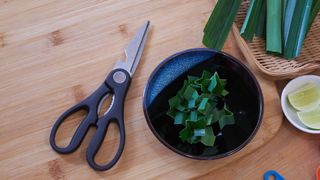
This is almost too obvious to mention in a list of essentials, except that it's so obvious, it's often overlooked. You can get some very clever, slim scissors these days, so it's always worth shopping around for space-saving designs. I currently have scissors that come in two pieces and slot together. Although, these are almost too clever for their own good, because they fall apart a lot. You can't really go wrong with something relatively traditional here.
Rolling pin
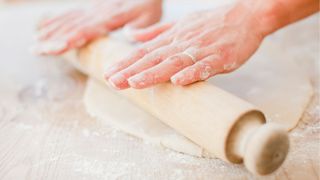
I've tried using a wine bottle as a rolling pin and, whilst it did do the job, it wasn't a sustainable substitute. A wooden rolling pin is really useful for bakers, but even if that's not your bag, you'll need this to bash some frozen peas that have formed a block, or to roll out pastry for a pie. There are lots of rolling pins that come with measurement ends that will guide you towards a certain thickness. It's one of those clever innovations that you'll wonder why nobody ever tried before. I wouldn't be without mine.
Weighing scales

None of us are skilled enough to intuitively measure out ingredients, so make sure to invest in some scales. There are lots of pretty designs out there as well as plenty of slim and subtle styles too. I've even seen new health scales that will work out the calories and macros in the food that your weighing, if that's the way that you eat. Having said that, I think you can't really beat something a little more traditional. Either way, there's no excuse not to have one of these.
Grater
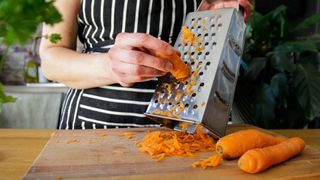
You won't get far making a nice cheese topping for your pasta or some carrot patties without a grater. I'd always recommend a tower, because you can get all the different grating sizes in one with those. You can get large, thick slices, as well as that superfine setting that I reserve for grating nutmeg. If you have the space, I'd recommend also picking up a Microplane grater. I recently picked up one of these and I think it's changed the game. It's so sharp, speedy, and precise.
Blender
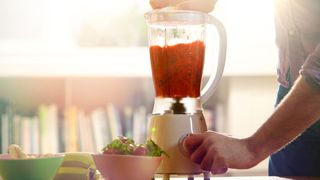
If you like smoothies, dips, and ice cones, you'll need one of these. The best blenders come in all shapes, sizes, and capacities. In a nutshell, a classic jug blender is perfect for families; a single-serve blender is good for smoothies and protein shakes; and a stick blender is better for soups, but not much else. You could, in theory, use all of these in your kitchen, but make sure you have at least one.
Food processor
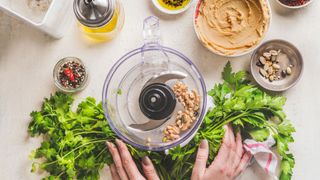
You'll want one of these, especially if you don't have a blender. The best food processors can chop, grate, slice, and blend all of your food completely and effortlessly. They're handy to have around and will take a lot of heat out of the kitchen. Newer models can offer all sorts of features. I've tested compact mini food processors as well as food processor blender combinations that come with weighing scales. You'll know better than I do what you need, so make sure to shop around.
Salt and pepper shakers
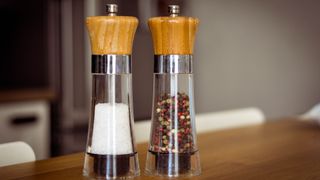
Life needs to be full of flavour and there's no better way to curate that than with some salt and pepper. These are often underestimated, but you can make a wonderful style statement with your salt and pepper grinders. The best example of this that I've seen is with Le Creuset's colourful combinations. Keep these close to the cooker, so you can season as you go, but make sure that you also have some close to the table. If you're feeling fancy, you could even buy two sets.
Wine stopper
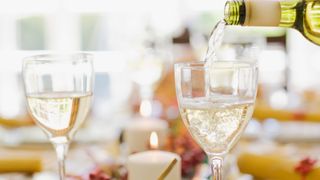
I'm never one to complain about having to finish a bottle of wine, but if you just want to use a little, you'll need a stopper to keep the rest fresh and delicious for the next time that you want a tipple. You can even buy smart stoppers that let you take wine out of the bottle without having to even pop it open – genius! If you need a gift idea, this is the perfect thing
Cutlery
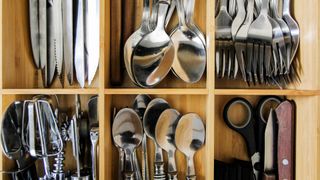
You won't get far without any cutlery. I wouldn't underestimate how nice premium cutlery feels and what kind of a psychological difference it makes to how you eat. If you've ever read Gastro Physics, you'll know that weighty, smooth cutlery can drastically improve your perception of food. Plus, there are lots of little extras, such as gelato and cappuccino spoons that you can choose to add into your collection.

Laura is woman&home's eCommerce editor, in charge of testing, reviewing and creating buying guides for the Homes section, so you'll usually see her testing everything from the best dehumidifiers to sizing up the latest Le Cruset pot. Previously, she was eCommerce editor at Homes & Gardens magazine, where she specialised in covering coffee and product content, looking for pieces tailored for timelessness. The secret to her heart is both simplicity and quality. She is also a qualified Master Perfumer and holds an English degree from Oxford University. Her first editorial job was as Fashion writer for The White Company.
-
 What Missoma earrings does Kate Middleton have? The two affordable go-tos the Princess of Wales wears on repeat
What Missoma earrings does Kate Middleton have? The two affordable go-tos the Princess of Wales wears on repeatThe Princess of Wales has an extensive royal jewellery collection but her affordable Missoma pieces are some of her most-worn
By Emma Shacklock Published
-
 Victoria Beckham designed this satin dress with you in mind - the flattering drape and graphite shade make it perfect for eveningwear
Victoria Beckham designed this satin dress with you in mind - the flattering drape and graphite shade make it perfect for eveningwearYou can shop her exact dress today
By Molly Smith Published